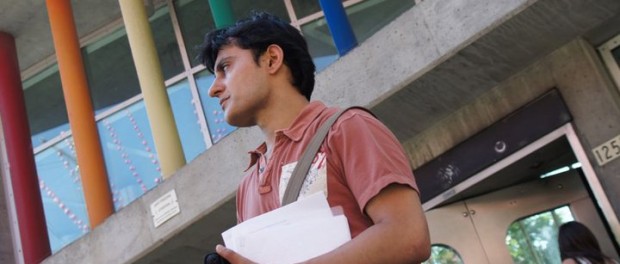Through my Brown Gay Lens : Mr. Oscar still so white?
Conspiracy theories abound about what happened behind the scenes that almost stole the Best Picture Oscar from Moonlight. Matters went far and for close to three whole minutes, La La Land and its crew were on stage giving acceptance speeches, but then diversity came roaring back and the Oscars were redeemed. Even for people like me, who took to emotional upheavals, tweeting, Facebooking of how disappointed we were with La La Land’s win, it took a few minutes to figure out what had really happened. And only after the error was corrected, would we breathe a sigh of relief. Between all of the twists and turns of Hollywood’s biggest night (they still call it that) Moonlight, the poetic saga of Chiron, beautifully nurtured by filmmaker/writer Barry Jenkins, claimed its place in the sun. I have to say that Moonlight had already won my favorite Oscar for the evening (Best Screenplay). But Jenkins was able to shun all dreaming and claim that his film has made its way into Oscar history, albeit after a hiccup.
The 89th Academy was really an all-out attempt to debunk the false notion that Oscar was ever #OscarSoWhite. With people of colour sweeping through the nominations: singers, actors, writers, you name them and people of colour found a slot somewhere in Oscarland. So, I decided to look back twelve months to this time in 2016 and wondered how on earth could Oscar ever be #OscarSoWhite?
Just a quick run down memory lane. The Oscars came under a huge onslaught of liberal hatred last year, when all of the twenty nominees in the top four acting categories were white actors. This year saw a lot of correction. And don’t get me wrong, a lot of the people nominated deserved their nods, the work they did was exemplary. But like any (white) actor, there were those who didn’t’ really need to be on the list. But after three plus hours of the Oscars, the kerfuffle with Moonlight, I began questioning, how much of all this had indeed changed? I wanted to really delve deeper and sift through the fluff to see if Oscar, our friend, was still polished white or had he managed shade of grey?
Let’s start with giving where credit is due. The list of nominees was heartening, not perfect, but surely encouraging with a varied range of talent. It was great to see some ‘diverse’ work, but also some real talent on display. I was very happy to have someone like Ruth Negga nominated for Best Actress, or Barry Jenkins writing and nominated for a story about black men and homosexuality or Dev Patel, a brown guy playing an adopted Australian (he looked dashing on the red carpet btw) etc. It was also good to see that people of colour made their way onto the red carpet and fashion wasn’t the usual fare; these exotic actors brought their own zing. Even the films that did well and made some big bucks (Lion and Hidden Figures, the latter made close to $200 million at the box office wow!), were led by people of colour in key acting roles.
But and there is the big BUT at the end of this. Of the top six studio bosses that run Hollywood, four were/are still white male. Of the 50 top grossing movies since the year 2000, 95% have been action-adventure or sci-fi or fantasy. Did this change in 2016? The 20 top grossing films were still in the same genres. And most of these blockbusters star heterosexual (assumption) white men. This is the pain and simple truth of it all. The billions of dollars of box office revenue, lining the pockets of stars and studio bosses are all brought in by plastering faces that we know, we love watching, over and over again. A big blockbuster can rake in enough box office revenue in a week that all indie films manage in the entire year.
I get it. When you run a studio, when you make business decisions (which most movies are), the tried and tested formula is easy, comfortable and pretty close to guaranteed cost recovery. An indie about a brown, black, gay, trans, woman, other marginalized character may look promising, but do you want to put your money on it? Furthermore, audience habits have moved slightly but not transformed to cultural, narrative or ethnic diversity. Netflix, Amazon, Hulu and the like are chipping at audience habits, but TV isn’t bereft of the #OscarSoWhite phenomenon. And more so, the hullabaloo of #OscarSoWhite is only a year or so old. Any expectation to see a rainbow in the sky is still a far-fetched dream.
The solution? As artists, we must persevere and not assume that we have made it or won’t make it, for we have the burden of a generation’s dreams on our shoulders. And with efforts like Moonlight, Hidden Figures or even Tangerine (top film the independent circuit in 2016) there is a glimmer of hope.
When having our feisty or friendly discussions of what happened last Sunday, or if Oscar was still #OscarSoWhite, we would be well served to remember that the proof remains in the pudding: The Best Picture this year is certainly not the crown jewel that Mr. Oscar wears. It was almost lost to him, for he still had a white shiny pearl lurking nearby.





